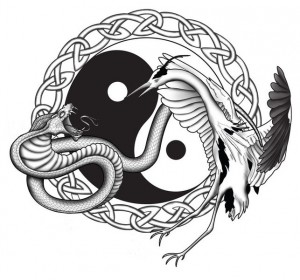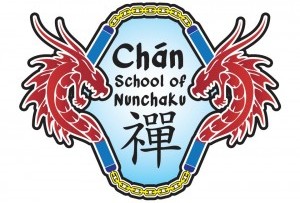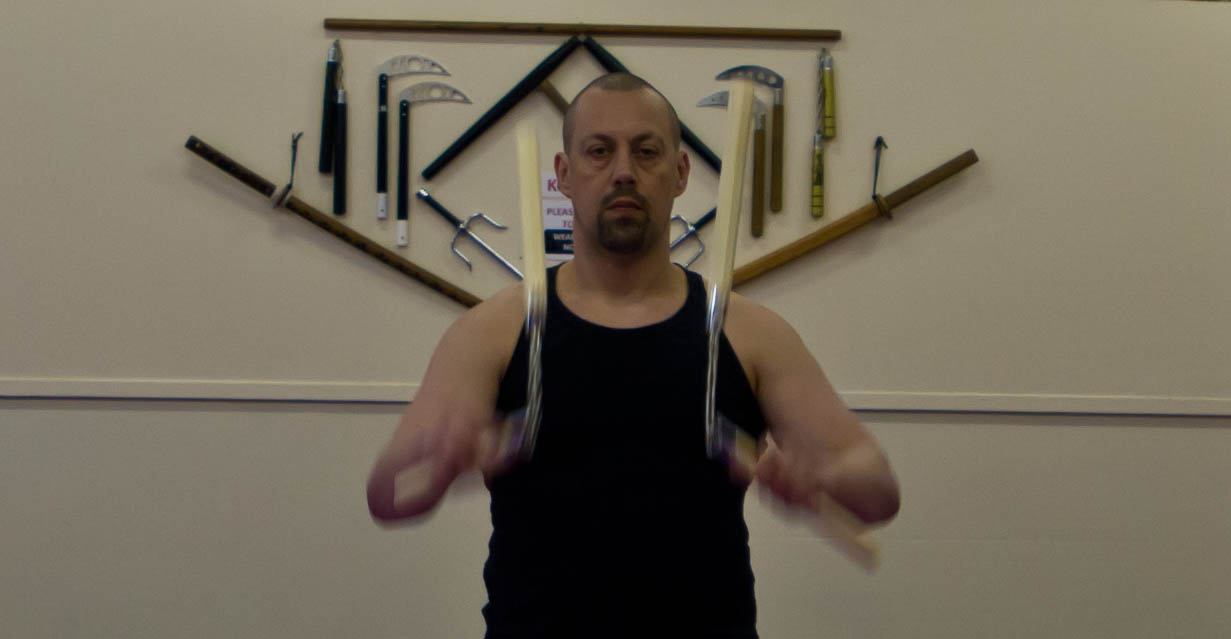Improve your Co-ordination: Better Double Nunchaku
Are you one of those people that are great at doing nunchaku manoeuvres with one hand but, as soon as the nunchaku is in the other hand, things slow down? Do you find that everything is going well until you need to do swaps or catches and then you are not so cool? Now you can improve your co-ordination. Anybody can improve their performance, their fluidity and their catches by training to become more ambidextrous – by creating ‘two right hands’.
Dominance and Ambidexterity
Whatever anybody tells you, no matter how well co-ordinated they may be, or however ambidextrous their limbs may appear, they will have a dominant side. It is possible that their dominant hand is the right hand and their dominant leg will be the opposite one, but there will be dominance of one side over the other. To a large degree this is hard wired into the brain but it is possible to over-ride the inherent dominance and learn to use the other limb primarily.
Having a dominant side has proven to be more effective in regard to survival skills and that is why we are all born with a dominant side. In order to best co-ordinate movement and action of both hands, there has to be a leader. There needs to be hand that is capable of holding and another that is capable of dealing with finer details like unscrewing, pressing buttons, manipulating.
Master and Slave
The dominant hand or the dominant foot is known as the ‘Master’. The other limb is known as the ‘Slave’. For the sake of simplicity, let’s stick to the hands.
Try something. Pick up a pen with your ‘slave’ hand and try to write. Depending on your natural level of dexterity you may or may not manage to write your name and even if you do it won’t be as neat or as easy as doing it with our ‘master’ hand.
Now try to write your name again using your slave hand but this time try to write your name backwards. How does that feel? Slightly easier?
Finally, take two pens. Try to write your name normally with your master hand and, at the same time, try to write you name backwards with your left hand. This time you should find it much easier to write with the weaker hand, and you can see why it is known as the slave. It is geared up to mimic the master hand.
Slave Training
When practising their forms, Wing Chun practitioners go through each movement with their left hand before their right, based on the assumption that people are right handed. If we train our weaker hand to do something, then our master hand will naturally follow and become better. You train one limb and make both of them better. That’s value.
When it comes to nunchaku training, it is well worth making our slave side your favourite side. Seriously, put your favourite music on, run through your favourite combinations, go through your routines and drills, but refuse to use the master hand. Train only with the slave, making it better and better. The results of such training will be awesome.
Mirror Monitoring
Use a mirror to spot disparity between master and slave movements. If you look carefully as you move you may see the slave shoulder tense up slightly and this may affect your catch. Perhaps tension in the wrist prevents the same movement that the master can achieve and causes the nunchaku to move off course. The mirror is great for showing you which moves are working, and which ones are not. As a general rule, if it is working it will tend to look more graceful and the geometrics just look better. It is an intuitive thing.
Reflection
When I talk about reflection here, I am not referring to the mirror. I am talking about the slave’s tendency to mirror what the master does. Try practising difficult moves with both hands simultaneously, in front of the mirror. Not only will you be able to see the disparity between both hands decrease with practice, you will also notice how the slave hand tunes in with the master, making it easier to train up the weaker hand to perform as well as the leader.
Training Tools
This type of training does not just work for nunchaku. I would advise it for all your martial arts techniques; your kicks, your strikes, your stances, and while using other weapons. At the moment I have been practising daily with Japanese Sai. These involve great dexterity to move and manipulate properly. What I am finding is that as I practise combinations with Sai, my coordination with nunchaku is improving all by itself.
Ambidexterity is well worth practising for. I strongly believe that it makes for better, more versatile martial artists, and I also think it affects the way we think, making us more creative.
If you would like to know more about alternative training methods or are interested in being trained in nunchaku and other weapons, get in touch.


 Follow
Follow